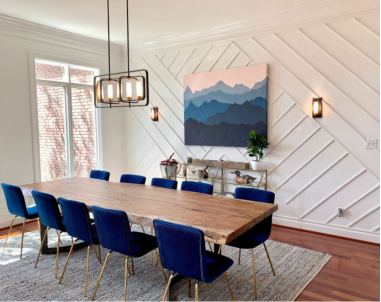
Home / News / Mastering the Art of Color Coordination: How to Match SPC Flooring with Warm and Cool Tones

SPC flooring is a popular choice for homeowners and interior designers because of its durability, affordability, and versatility. When it comes to selecting SPC flooring, the choice of warm or cool tones can greatly impact the overall look and feel of a space. Matching the color of the SPC flooring with the walls and other elements of the room is crucial for achieving a cohesive and harmonious look. By understanding the relationship between SPC flooring and warm and cool tones, designers can create stunning and personalized spaces that reflect their clients' preferences and styles.
Warm tones refer to colors that are associated with heat, such as red, orange, and yellow. These colors evoke feelings of warmth and are often associated with the sun or fire. On the other hand, cool tones belong to the green, blue, and purple families and are often associated with water or grass.
Although this may seem straightforward, it can become confusing when terms such as "warm white" or "cool red" are used. This is because there are cool versions of warm colors and warm versions of cool colors, which is determined by the undertones and composition of the color.
Undertones of warm colors are typically orange, yellow, or red, while cool colors have undertones that are green, blue, or purple. For example, a pink color can be warm if it has red undertones but can be cool if it has blue undertones. Comparing different shades of pink side-by-side can help illustrate the difference between warm and cool versions of the same color.
l Cool tones are best for creating bright and airy spaces. They reflect natural light, making small rooms feel larger. Bathrooms and bedrooms benefit from cool tones as they provide a fresh, calming ambiance. However, it's important to mix cool tones with warm accents to avoid an overwhelming, sterile feel.
l Warm tones are ideal for spaces that require a sense of warmth and comfort. They are particularly suited to areas with abundant natural light. Spaces where families spend time together, such as living rooms and dining rooms, are traditionally decorated with a warm color palette to create a cozy and inviting atmosphere.
In rooms with lots of natural materials, warm tones can help unify the space by combining the elements of each item. By using warm tones in these areas, you can create a cohesive and harmonious environment.
Matching wall colors with wood floors can be challenging, as hardwood floors come in many tones and colors. The best approach is to paint your walls with a neutral color, such as white, off-white, or light gray. Designers recommend choosing a paint color that contrasts with the undertones of your flooring.
For floors with cool tones, opt for warmer wall colors such as Pure White by Sherwin-Williams. On the other hand, warmer toned floors look best with cooler wall hues like Oxford White. Matching your flooring undertones and wall paint colors is a crucial interior design decision for homeowners, as it can greatly impact the overall look and feel of your home.
Lighting is an important consideration when selecting a flooring color. The type of lighting in your space can greatly impact how your floor looks, so it's essential to consider both natural and artificial sources of light.
If your home receives a lot of natural light, consider installing an overhead light fixture with warmer tones to complement warm-toned woods like oak and walnut. On the other hand, if you prefer artificial lighting, choose cooler-toned fixtures such as pewter to match with cool-toned floors like stone. By considering the lighting in your space, you can ensure your flooring color looks its best.
To add depth and texture to a space, consider the concept of color depth perception, which suggests that warm colors appear to advance, while cool colors recede, affecting how our eyes perceive depth. Mixing warm and cool colors can create contrast and interest in a room, especially when decorating a neutral space with warm whites or cool greys. By adding hints of contrasting color hues, you can create a more visually interesting room. Whether you choose a warm tonal scheme or a mix of warm and cool colors, understanding color depth perception can help you achieve a beautiful and personalized look for your home.
If you want to know more information about SPC flooring or Trioflor, welcome to contact us, please visit our website at https://www.trioflor.net/ . We will be happy to help you out!